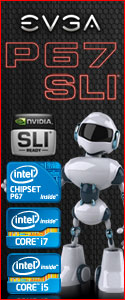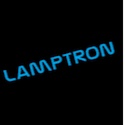Introduction
Its not often that we see any major changes in the computing industry regarding your computers memory. Every few years a new standard of memory appears that offers the next boost beyond that of the old. DDR3 is no different to this trend, offering greater speeds at voltages that are gradually getting lower.  Today sees a new addition to the path that this trend adheres, one company has aimed to take this trend to a whole new level, a level only previously seen by a few select manufacturers before, at a cost that few can rarely afford. G.Skill set to take on the competition with insane performance without the insane price.
Company Background
Founded in 1989 by a select group of enthusiasts over in Taiwan; G.Skill was set from this day forth to develop and produce high quality memory for the desktop computer as we know it today. Only really hitting the mainstream as a reputable manufacturer of RAM in mid 2003; G.Skill set about developing high speed, high quality products for both the mainstream and enthusiast alike. The latest achievement has been that of the RipJaw range of high performance low voltage DDR3 designed with Intel’s i5/i7 in mind. With time comes the development and manufacture of newer and possibly greater products. Today faces no exception to this rule with the release of the PI series of memory for the i5/i7 range of Intel CPUs. Rated to run at speeds of 2000mhz (pc16000) with latencies of 6-9-6-24 2N and 1.65v out of the box; the PI series ram looks to set new standards in both the mainstream and enthusiast world. G.Skill produces some of the industry’s best memory modules however with competitive pricing towards the lower end of the pricing scale; G.Skill have products aimed at both the enthusiasts within the market and with these low prices across the board have also managed to keep the mainstream user in the loop too. To see if this new line of ultra low latency, high speed memory can keep up with the already proven range of already released memory we set this reviewer with the task of seeing exactly what the new G.Skill PI series modules are all about.
Packaging and Initial Impressions
G.Skill once again have not gone to too much effort when packaging is concerned. As you can see above, the box is neither colourful nor has much thought gone in to its creation. This is not too much of an issue as once the box is opened and the contents removed all is forgiven. It would be nice to see packaging as well thought out as the product inside considering the premium price and potential (expected) performance but this is not an necessity and instead more of a want. A small sticker with “i5/i7″ has been placed on the top of the packaging so at least the customer looking to purchase this product has the reassurance of its intended use. The kit product number and essential specifications are present on the rear of the packaging for easy reference. Opening up the box (as seen below) reveals a very sleek looking cooling solution however this will be looked at in a little more detail later on in the review.
Removing the modules from the box and packaging contained reveals a pair of beautifully crafted heat sinks encasing the modules themselves. Standing at nearly twice the height of standard modules, this particular series could cause an issue with some cooling solutions such as the previously reviewed Cooler Master V10 and as such a little research prior to purchase may be in order. With all modules the basic specifications are printed on a sticker on the right hand side of each module. Not only does this aid with the initial installation and set up but also easy identification if like many enthusiasts you have numerous kits. G.Skill have played it safe with the colour scheme and design keeping things both simple and neutral whilst maintaining pleasant aesthetics. Below are a few other images highlighting the quality finish. You may have also noticed that the heat spreaders have slots cut in to them across approximately 70% of the upper surface, this has been added to help with heat dissipation although DDR3 runs cool anyway so this may not be needed.
Packaging and Initial Impressions Continued…
Also included in the box is a ram cooler. This is essentially a 60mm fan that clips to the memory banks placing it over the modules to help with the transference of heat generated by the modules. In theory this should also help with stability and possibly aid with the overclocking of the modules in the long run. However, DDR3 runs cool as it is so this may prove to be more of a gimmick than anything of any use.
Taking a closer look at the memory cooler reveals how the unit may be installed and how it is constructed. As you can see with both the above and below images a great deal of thought and care has been put in to the production of the cooler. The most welcome feature here is the quality of the cable. It is true that the cable used may not be any different to that of a generic system fan, however it has been braided to a standard that reaps precision and quality. The 3pin plug below shows this quality in a greater detail revealing what is less than 1mm of exposed un-braided cable. This is the kind of quality one would expect from ones own braiding work rather than that of a manufacturer, as many manufacturers would have left a far greater length exposed.
Taking a closer look at the under side of the fan reveals the same quality where the braiding is concerned, so with this in mind; what was initially thought to be a stocking filler to attempt to justify the cost is now looking to be more of a welcome addition. On the underside of the fan you will notice a sticker than includes some brief specifications of the fan. At the speeds listed you would be lead to believe that this may be a little noisy however during testing there was not one point in which the cooler could be heard over any of the other kit. If you look closely you can see what appears to be some micro LEDs. These LEDs glow with a relaxing blue haze illuminating the modules gracefully without being over powering. To say that this cooler is essentially free or included within the price of the kit is fantastic, making this particular kit look even more appealing than one would initially have thought.
Specifications and Officially Supported Boards
* The following information has been pulled from the official G.Skill website.
| Main Board | intel |
| System | Desktop |
| System Type | DDR3 |
| M/B Chipset | Intel P55 |
| CAS Latency | 6-9-6-24-2N |
| Capacity | 4GB (2GBx2) |
| Speed | DDR3-2000 (PC3 16000) |
| Test Voltage | 1.65 Volts |
| PCB | |
| Registered/Unbuffered | Unbuffered |
| Error Checking | Non-ECC |
| Type | 240-pin DIMM |
| Warranty | Lifetime |
| Qualified Motherboards List | |
| ASUS | Maximus III Formula(Since BIOS 1204) |
| ASUS | P7P55D-E Deluxe(Since BIOS 0609) |
| ASUS | P7P55D Deluxe(Since BIOS 1207) |
| ASUS | P7P55D-E(Since BIOS 0610) |
| ASUS | P7P55D(Since BIOS 1207) |
| EVGA | P55 Classified 200(A51) |
| EVGA | P55 FTW 200(A51) |
As you can see from the above, the motherboard used for review today is not in the “Qualified Motherboards List”. Why this is however is unknown by OCT as numerous other G.skill kits rated to run at speeds in excess of these are officially supported. OCT had no issues using this memory at the rated timings and frequency with no sign of instability however if your board is not listed above, it may be worth searching the internet for users that may have used these modules in your board prior to purchase.
Test Kit
Hardware
- Asus Sabertooth 55i motherboard
- Intel i3 530 retail processor clocked at 3.6ghz (18Ãâ€â€200)
- ATI Asus 5770 CuCore 1024mb
- Western Digital 500GB SATA-II hard drive
- Generic DVDRW SATA unit
- OCZ Stealth Stream 400W PSU
- G.Skill RipJaw 2000mhz 1.6v (2Ãâ€â€2gb) cl9-9-9-27
- G.Skill ECO 1600mhz 1.35v (2Ãâ€â€2gb) cl8-8-8-24
- G.Skill PIS 2000mhz 1.65v (2x2gb) cl6-9-6-24
Software
- Windows Vista Home Premium 64bit
- Intel system drivers
- ATI CCC with 10.3 driver release
Testing Software
- Sisoftware Sandra 2009
- Everest
- WinRar Compression Utility
- cpu-z
Testing
As you may be aware, memory pricing varies across the board from manufacturer to manufacturer. Kits with low timings and higher frequencies are generally considerably more costly than kits that ship with more modest frequencies and less tight timings. The G.Skill PI series of memory kits fall straight at the top of the ddr3 range sporting a blisteringly quick latency set of 6-9-6-24 and speeds of 2000MHZ. From this alone it is easy to see why there is such a fuss where this kit is concerned. At just 1.65volts the PIS range of i3/i5/i7 memory kits falls right at the top end of what is allowed in the intel spec. With this voltage comes little in the means of overclocking where over volting is concerned.
For comparison purposes a 1.60volt rated 2000mhz G.Skill ECO kit has been selected to represent mainstream whilst  a set of G.Skill RipJaw 2000mhz cl9 modules has also been selected to show any difference between the two kits where value per performance is concerned.
Everest
 As you can see from the above results, the drop in latency has had a positive effect on bandwidth and latency however the premium over the RipJaw kit certainly is not worth it where day to day use is concerned.
As you can see from the above results, the drop in latency has had a positive effect on bandwidth and latency however the premium over the RipJaw kit certainly is not worth it where day to day use is concerned.
Sisoft Sandra Lite 2010c
 Looking over the Sisoft Sandra results draws a similar conclusion to that of the everest results. So far the low latency is not showing too much of a performance improvement over the more relaxed cl9 of the RipJaws.
Looking over the Sisoft Sandra results draws a similar conclusion to that of the everest results. So far the low latency is not showing too much of a performance improvement over the more relaxed cl9 of the RipJaws.
WinRar File Encryption and Compression
Looking over the File Compression and Encryption tests shows a slightly difference story. Here you can see that the latency drop coupled with the high frequency has shown some positive results shaving a couple of seconds off of each scenario. If you as a user should perform many tasks such as this then you may be on to a winner. Again, it is debatable whether or not this slight drop in time and performance increase is worth the premium paid.
Overclocking
Overclocking memory is never really an easy task. Rarely can you get any real benefit out of a kit by overclocking it as the speed increases are usually minimal with only a few extra percent within reach. Rated to run at a ridiculously quick 2000mhz cl6-9-6-24 at 1.65volt the PI series should have some extra headroom with slackened timings but little with its current offerings. With this is mind the reviewer set about increasing the operational frequency in one Mhz steps until the system failed to post. When this happened the timings were slackened process repeated. The maximum frequency reached was a very respectable 1104.4mhz (2209.2mhz ddr). To reach this frequency timings had to be slackened to a more modest 7-10-7-27 . No matter how loose the timings and how much extra voltage was added the modules refused to run stable at anything higher. This was possibly the limit of the board rather than the modules themselves. Considering the PI series kit is rated to run at 2000mhz this extra 209.2mhz (approximately a 10% overclock) was a welcome addition but not entirely a mind blowing achievement.
As you can see from the above results, the extra 10% made a difference but not all that much. The extra stress the modules were subject to and the slackened timings have not really done much justice for these modules. Out of the box they are some of the fastest modules money can buy with rated specifications similar to that of kits costs near £300. It is unclear how much these modules are at this time as finding anywhere within the UK that stocks them has proven difficult however a few online vendor have them listed between £179 and £200 making these an absolute steal when compared to Corsairs Dominator GTs that cost substantially more for little if any gains.
Conclusion
With an approximate cost between £180 and £200, the G.Skill PIS 2000mhz cl6 low latency kit is out of this world. Costing a vast amount less than other comparable kits by other manufacturers makes this kit very desirable. The overclocking head room is not what you would call brilliant however 2200mhz is far from being a speed that should be grumbled at. With the ability to run at 2000mhz cl6 you must question how G.Skill have managed to achieve this. There are many kits with latency sets of 7-8-7-20 that perform near on par with these modules but cost much more. If one manufacturer can justify such pricing then it does raise the question of why are G.Skill not charging to this level? Putting this aside it is clear that G.Skill are yet again on to a winner and as such should be praised for their efforts.
Pros
- Cost (cheap for high end kit)
- Out of the box performance
- Overclocking ability
- Aesthetics
Cons
- Cost (still expensive)



















 Posted in
Posted in 





